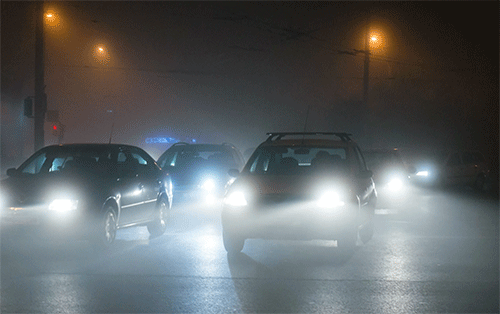Community Policing Officer
As winter approaches, the days become shorter and the nights longer, compelling motorists to start driving to work before sunrise and returning after sunset. Driving between sunset and sunrise poses unique challenges and dangers, particularly when motorists fail to adhere to essential safety regulations.
According to Regulation 173 (1) (b) under the Road Traffic and Transport Regulations of 2001, it is mandatory for drivers to switch on the lamps of their motor-vehicles between sunset and sunrise, or at any time when there is insufficient light or unfavourable weather conditions. This regulation is crucial for ensuring the safety of all road users.
Although most parts of the city are equipped with street lights, proper lighting, particularly from a vehicle, is fundamental to safe driving. During low visibility periods such as nighttime, dawn, dusk, and during adverse weather conditions, vehicle lamps serve several critical functions. Firstly, headlights and taillights make a vehicle visible to other drivers, pedestrians and cyclists. This visibility is crucial in preventing collisions, and ensuring that other road users can accurately judge the speed and distance of approaching vehicles. Secondly, headlights illuminate the road ahead, enabling drivers to see obstacles, road signs and potential hazards. This illumination is vital for safe navigation, particularly on poorly-lit roads. Lastly, indicator lights and brake lights are essential communication tools. They signal a driver’s intentions to turn or stop, providing necessary information to other road users and preventing accidents.
Failing to switch on vehicle lamps during low visibility periods can lead to severe consequences. Without lights, a vehicle becomes virtually invisible to other road users. This invisibility increases the likelihood of collisions, as other drivers may not see the vehicle until it is too late to react. Inadequate lighting reduces the time drivers have to react to road hazards. Obstacles, animals and pedestrians may only become visible at the last moment, increasing the risk of accidents. In the event of an accident, failure to comply with lighting regulations can result in a driver being held liable for damages and injuries.
The Road Traffic and Transport Regulations of 2001 stipulate clear penalties for failing to switch on vehicle lamps as required. Drivers caught operating a vehicle without the necessary lights between sunset and sunrise, or in conditions with insufficient light, can be fined up to N$750. Similarly, this intervention underscores the seriousness of adhering to road safety laws. In the event of an accident, a driver who has not adhered to lighting regulations may face increased liability, which implies higher compensation payments for damages and injuries.
To ensure safety on Windhoek City roads, drivers should ensure all vehicle lights are functioning correctly. Regular maintenance and checks should be done to prevent unexpected failures.
It is, therefore, important for motorists to stay vigilant of changing seasons and weather conditions, and comply with this provision of the law to attain overall safety on city roads.
*Remember to contact Windhoek City Police on 061 302302 or 061 290 2239.


